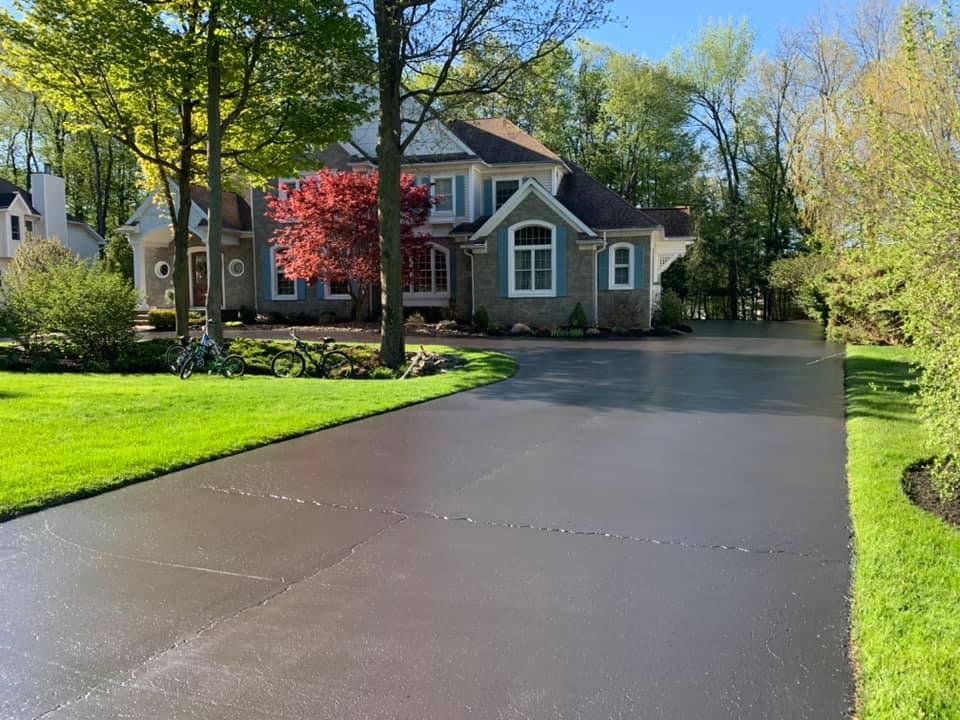Prolong Pavement Lifespan: Innovative Cold Mix Asphalt Sealing
Prolong Pavement Lifespan: Innovative Cold Mix Asphalt Sealing
Blog Article
Cold Mix Asphalt Vs. Hot Mix Asphalt: Which Is Right for You?

Composition Differences
Cold mix asphalt is generated by emulsifying the asphalt binder with water and an emulsifying agent prior to mixing it with accumulation. The hot mix asphalt manufacturing process involves warming the aggregate and asphalt binder independently prior to combining them at the asphalt plant.
Furthermore, chilly mix asphalt has a tendency to be less dense and much more versatile than warm mix asphalt. This versatility makes it much better suited for areas with greater degrees of activity, such as driveways or roads with heavy web traffic. In comparison, hot mix asphalt is known for its high toughness and resistance to rutting and cracking, making it a favored selection for freeways and high-traffic roads where longevity is essential.
Installment Process Variations
The procedure of installing cool mix and hot mix asphalt displays remarkable variances in their requirements and treatments. Cold mix asphalt, being a much more adaptable material, can be applied straight from the bag or container onto the pit or harmed location. It requires marginal preparation job, such as cleaning the area and condensing the cool blend with hand devices. This makes it a practical choice for momentary and fast solutions. On the other hand, warm mix asphalt necessitates a much more fancy installation procedure. It includes heating the mix to heats before laying it down on an appropriately ready base. The prep work includes compacting the base, applying a tack layer, and using heavy machinery like pavers and compactors for a smooth and long lasting coating. Due to the home heating requirements, warm mix asphalt installations are typically lugged out by professionals with specific equipment, making sure a more long-term and structurally audio outcome.
Toughness and Long Life Factors
When thinking about asphalt choices, sturdiness and durability are vital variables to review for long-term sidewalk efficiency,. Hot mix asphalt (HMA) is understood for its outstanding toughness and long life. The heats throughout the mixing and laying process enable better compaction, resulting in a denser and more powerful sidewalk structure. This results in HMA being much more resistant to hefty website traffic tons, extreme weather condition conditions, and the effects old contrasted to cold mix asphalt (CMA)
In regards to durability, HMA typically exceeds CMA as a result of its exceptional stamina and resistance buildings. HMA more info here sidewalks have a longer life span, requiring much less frequent fixings and maintenance, which can convert to cost financial savings in the future. Additionally, HMA sidewalks are a lot more easily personalized to meet details project demands, further boosting their sturdiness.
Price Considerations
Thinking about the monetary ramifications is a critical aspect when evaluating the choice between hot mix asphalt (HMA) and cool mix asphalt (CMA) for sidewalk tasks. While the first price of warm mix asphalt is normally greater than that of chilly mix asphalt, HMA commonly supplies a much more affordable service in the long run due to its superior sturdiness and longevity.
In addition to product costs, it's crucial to think about the expenditures associated with installment and maintenance when comparing HMA and CMA. Ultimately, the decision in between HMA and CMA should take right into account not simply the preliminary price but likewise the lasting financial effects to figure out the most affordable alternative for the specific pavement task.
Environmental Impact Comparison
Contrast of the ecological impacts in between warm mix asphalt (HMA) and cold mix asphalt (CMA) reveals unique distinctions in sustainability techniques. HMA production needs high temperature levels, resulting in boosted power intake and greenhouse gas emissions. The process likewise launches unpredictable natural compounds (VOCs) and dangerous air contaminants (HAPs) right into the ambience. On the other hand, CMA is produced and applied at lower temperatures, minimizing power use and exhausts significantly. The lower production temperatures of CMA result in decreased fuel usage and lower levels of CO2 discharges, making it a much more eco-friendly choice.
Moreover, the use of CMA frequently involves reusing existing asphalt sidewalk, advertising source preservation and minimizing the amount of waste sent to landfills. This recycling facet better boosts the sustainability of CMA compared to HMA. In general, when considering the environmental influence, CMA becomes a much more environmentally sustainable selection due to its lower energy needs, lowered discharges, and the capacity for recycling existing products. By choosing CMA over HMA, road construction check tasks can contribute positively to ecological conservation efforts.
Verdict
In conclusion, the option in between chilly mix asphalt (CMA) and warm mix asphalt (HMA) depends upon numerous factors such as make-up, installation process, durability, durability, price, and environmental effect. asphalt repair. While CMA offers a cost-effective and fast solution for small repairs, HMA guarantees remarkable longevity and longevity for rush hour areas. Take into consideration these variables carefully to identify which kind of asphalt is the appropriate choice for your paving needs

Thinking about the economic implications is a crucial element when reviewing the choice in between warm mix asphalt (HMA) and cold mix asphalt (CMA) for pavement tasks. While the initial cost of warm mix asphalt is commonly higher than that of chilly mix asphalt, HMA usually provides a much more cost-efficient solution in the long run due to its remarkable longevity and see here now longevity. asphalt patch repair.Contrast of the ecological impacts between hot mix asphalt (HMA) and chilly mix asphalt (CMA) exposes distinctive distinctions in sustainability practices.In conclusion, the choice between chilly mix asphalt (CMA) and warm mix asphalt (HMA) depends on different variables such as make-up, installation process, resilience, durability, expense, and environmental effect
Report this page